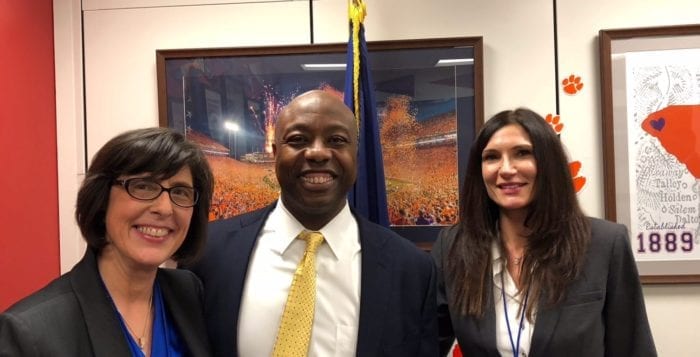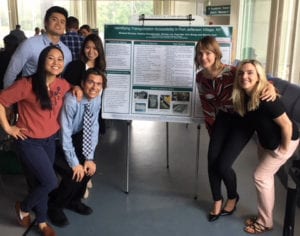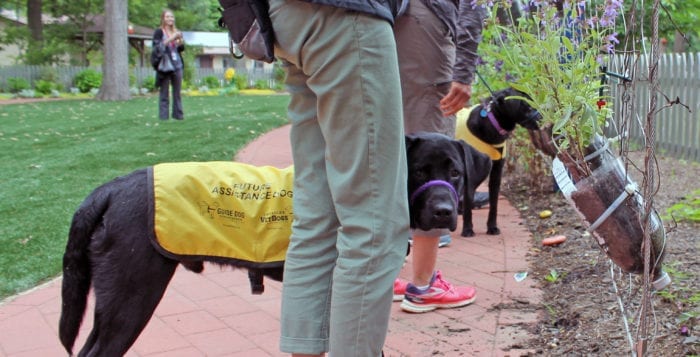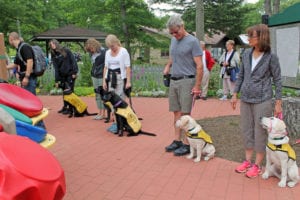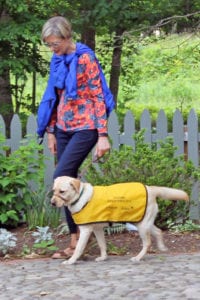By Amanda Perelli
A Port Jefferson resident joined a contingent that trekked to Washington, D.C., to advocate for facilities that offer therapeutic treatments for mental health disorders like autism.
Andrea Lambe headed to Capitol Hill in May and spoke with lawmakers on the role of therapeutic treatment programs and to call for improvements to the credentialing process for therapeutic schools and programs.
Her son, Joseph, has severe autism and lives at the Anderson Center for Autism, located in Staatsburg. Lambe drives about three hours every weekend to see him, because places like these are rare around the country.
“He’s in a good place that allows all kinds of involvement,” Lambe said. She has gotten involved beyond caring for the needs of her son, joining an advocacy group that the Anderson Center formed for parents.
The center is a member of the National Association of Therapeutic Schools and Programs, an organization whose mission is to serve “as an advocate and resource for innovative organizations which devote themselves to society’s need for the effective care and education of struggling young people and their families,” according to its website.
“NATSAP members join together to have a voice in Washington, D.C., because we believe it’s imperative to educate legislators on the importance of tackling mental health issues including autism,” said Megan Stokes, executive director of NATSAP, in a statement. “We explained to those on the Hill how NATSAP programs help fill the gap of mental health programs for adolescents and young adults that are not being met by publically funded programs.”
Lambe met up with some two dozen other people from different therapeutic schools around the country.
“We discussed the role of therapeutic treatment programs in today’s society and how these programs benefit at-risk adolescents and young adults confronting serious and life-threatening mental health issues including autism,” Lambe said. “We emphasized the stringent credentials required of those facilities that are NATSAP member programs.”
She met with U.S. Sen. Kirsten Gillibrand (D-New York) and Rep. Lee Zeldin (R-Shirley) as part of a 15-member delegation from NATSAP as well as Rep. John Faso (R-New York), Rep. Mark Sanford (R-South Carolina) and members from the offices of Sen. Lindsey Graham (R-South Carolina), Sen. Tim Scott (R-South Carolina) and Rep. Mark Walker (R-North Carolina).
“I loved it because I feel like we are so welcome because it’s such a bipartisan issue,” Lambe said. “Everyone can relate to it. I almost feel like they are welcoming us in to tell our stories. I was shocked and really amazed with how much time they spent with us and how, Democrat or Republican, they all seemed to be genuinely concerned and gave us a lot of time to tell our stories.”
Lambe said Faso agreed to tour the Anderson school and see the environment.
“No one really knows how to deal with this population and it just kind of gets scrambled and tossed aside sometimes,” Lambe said. “The big problem is when he turns 21 and the school district says goodbye. There is very limited housing — another huge issue for the aging autism population.”
The NATSAP delegation discussed its desire to promote legislation that improves the credentialing process for all therapeutic schools and programs in North America, according to a press release.

